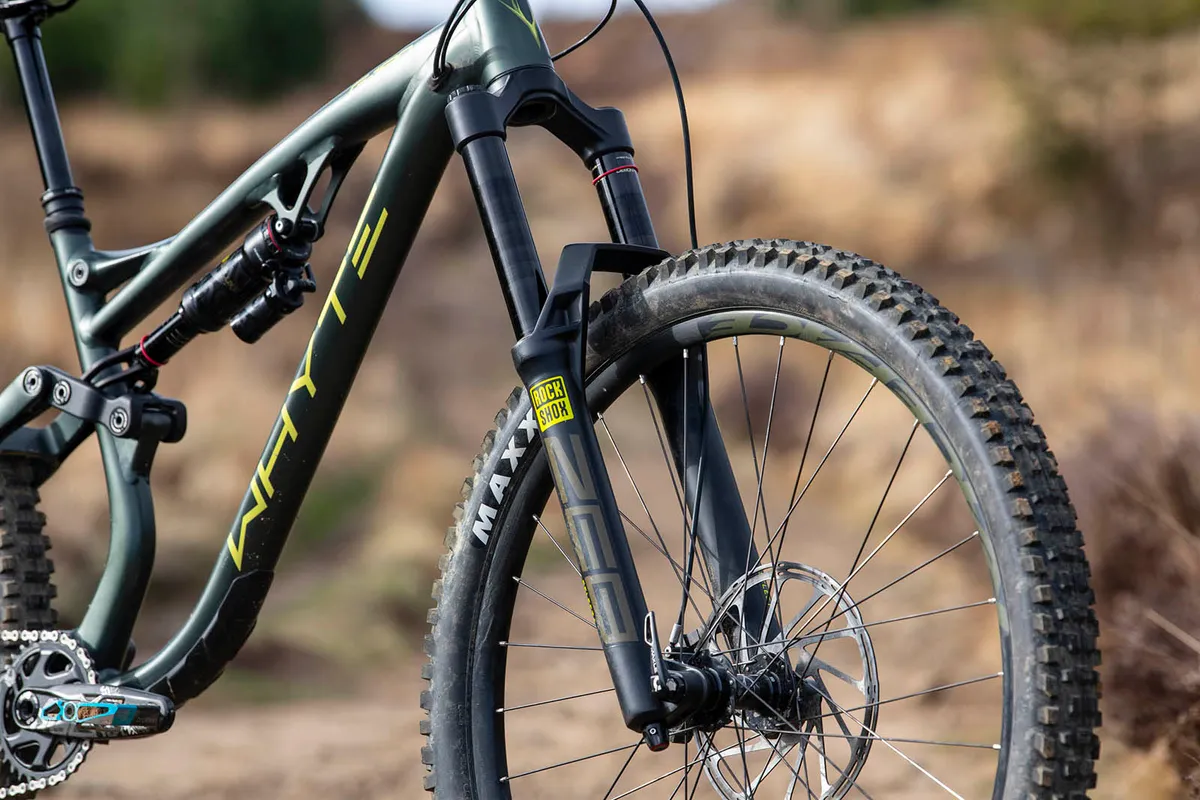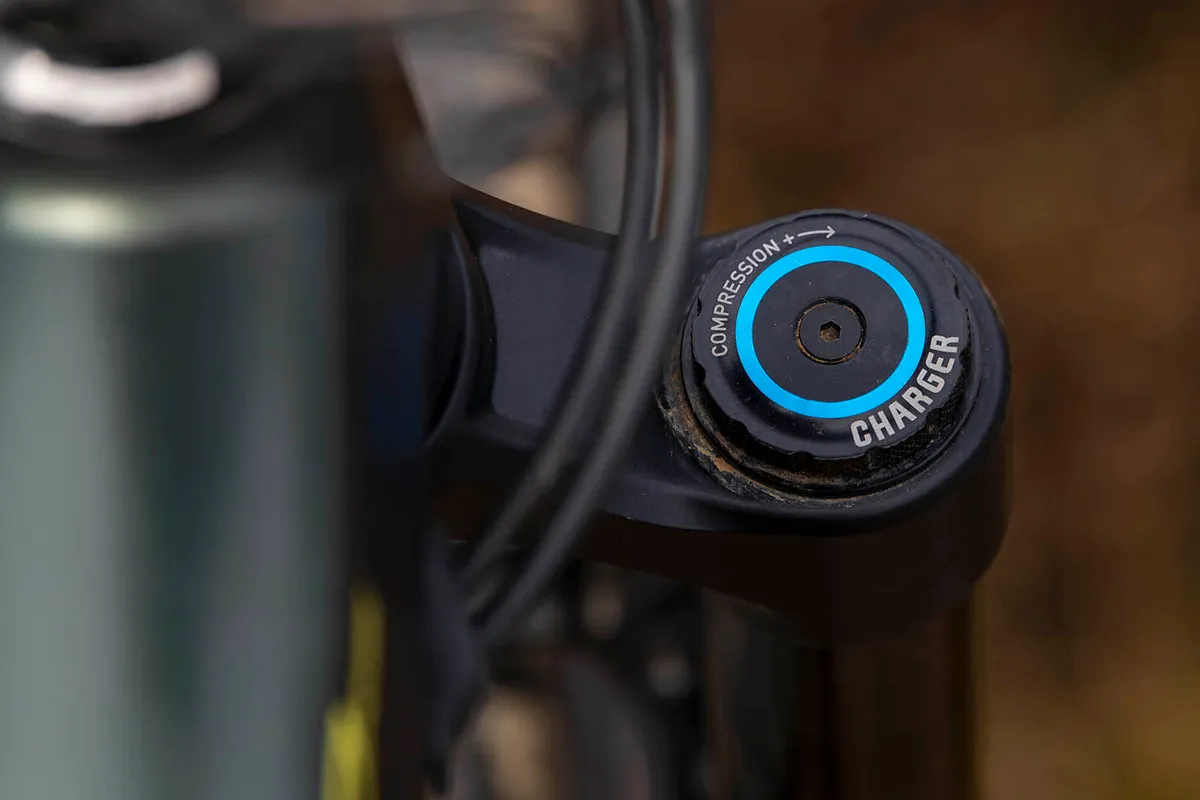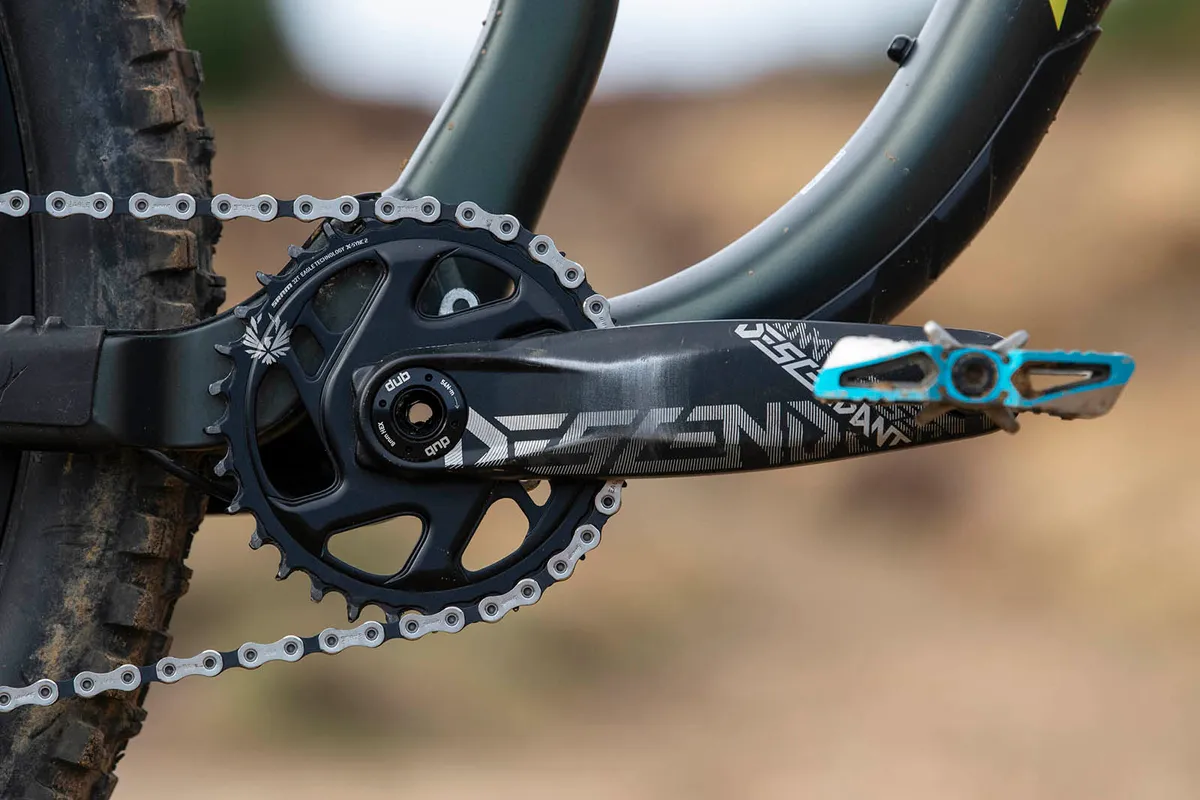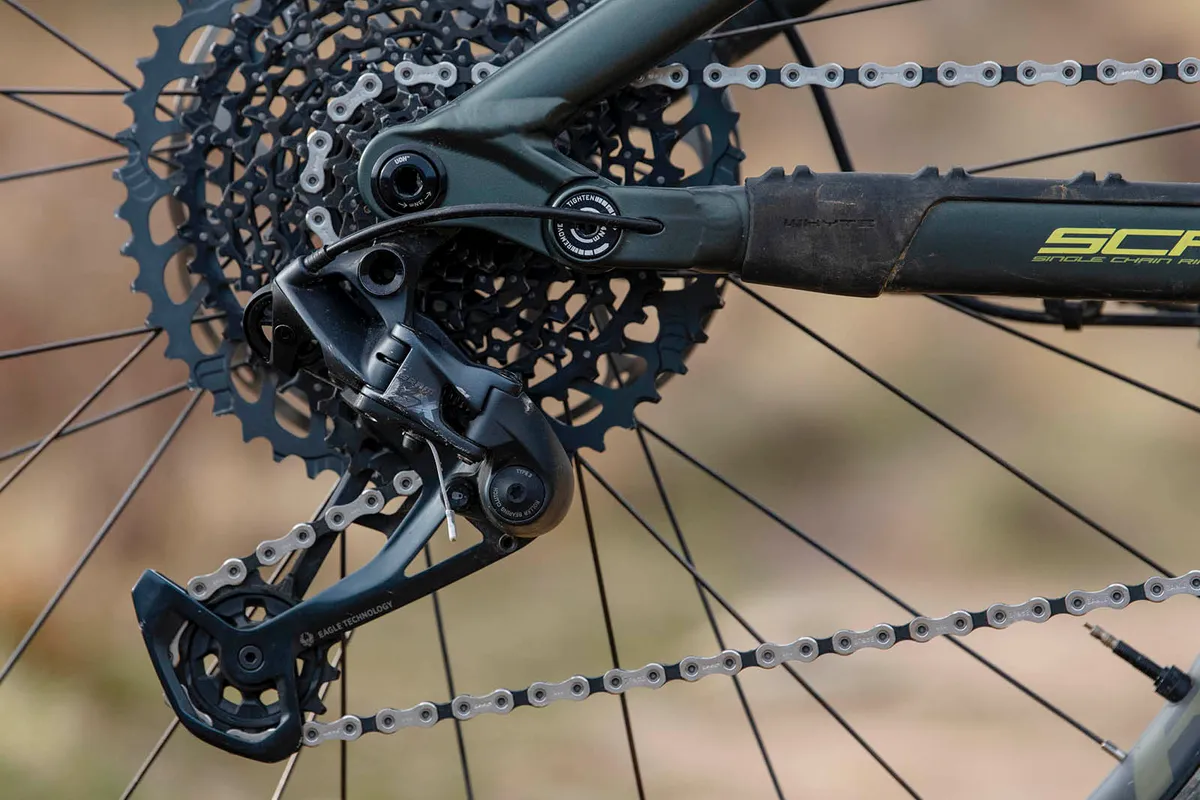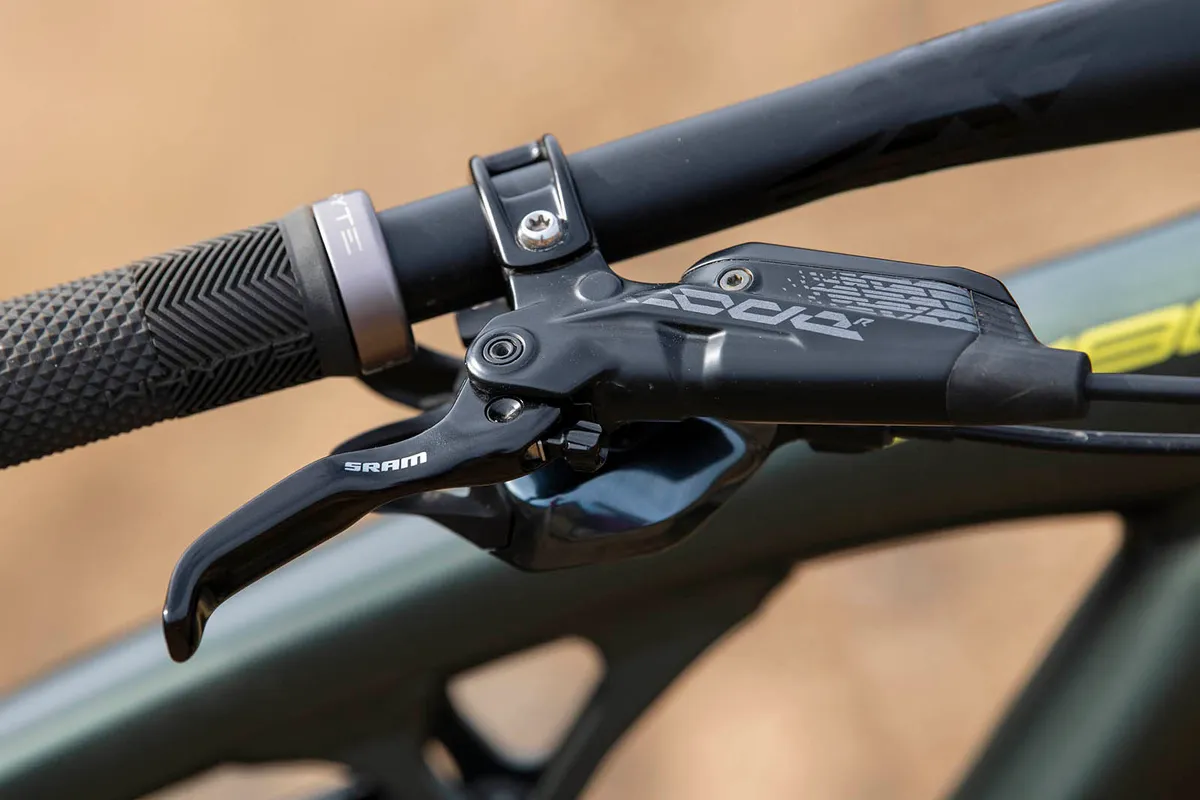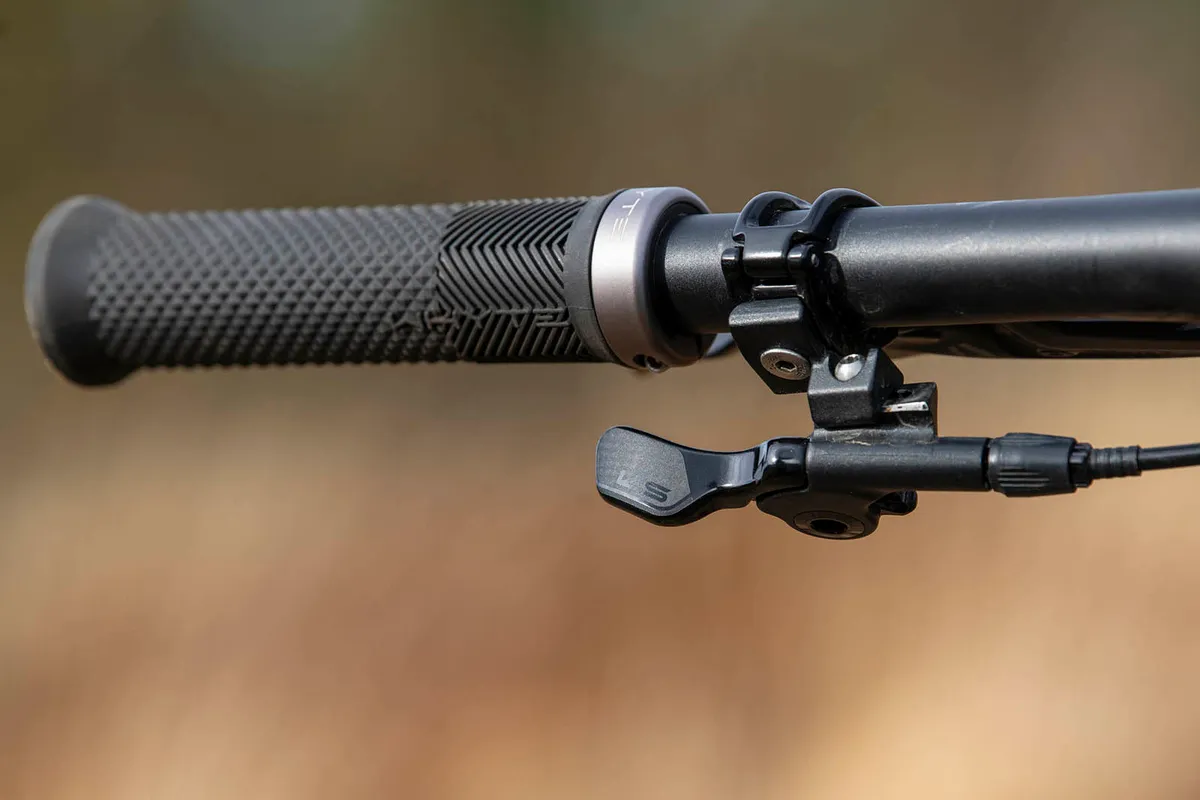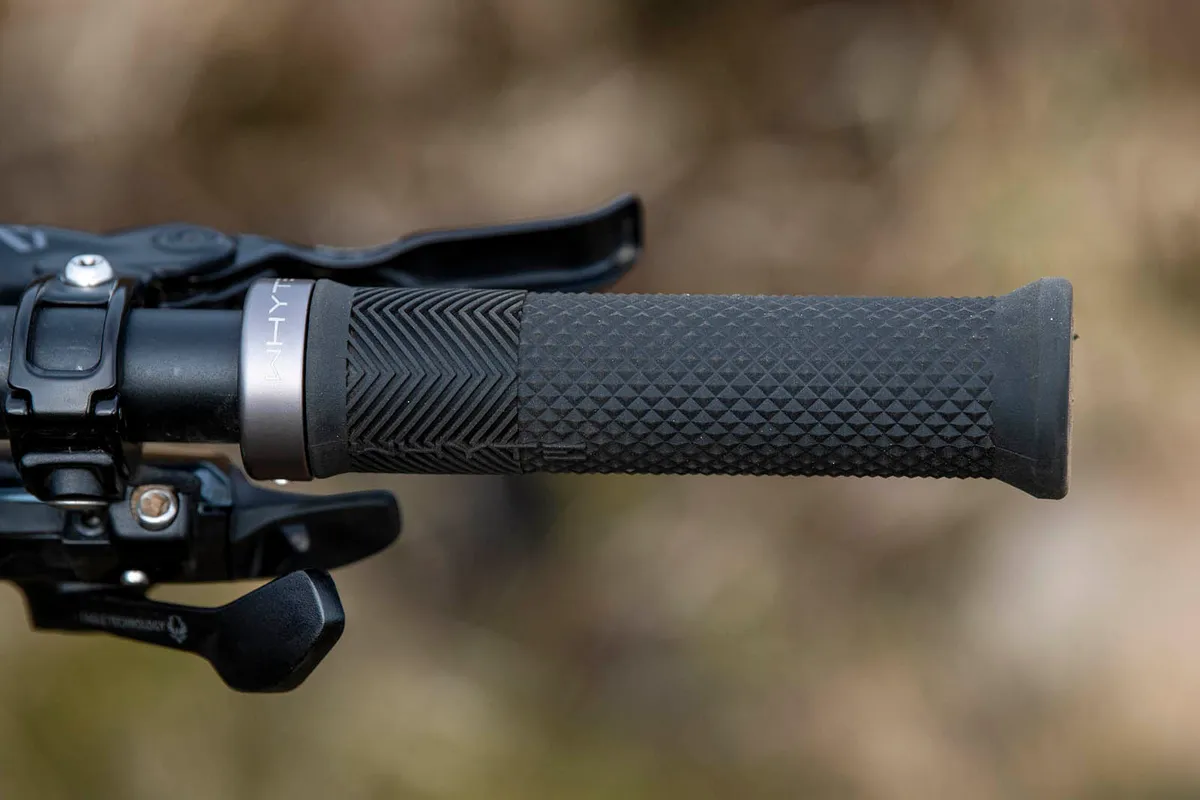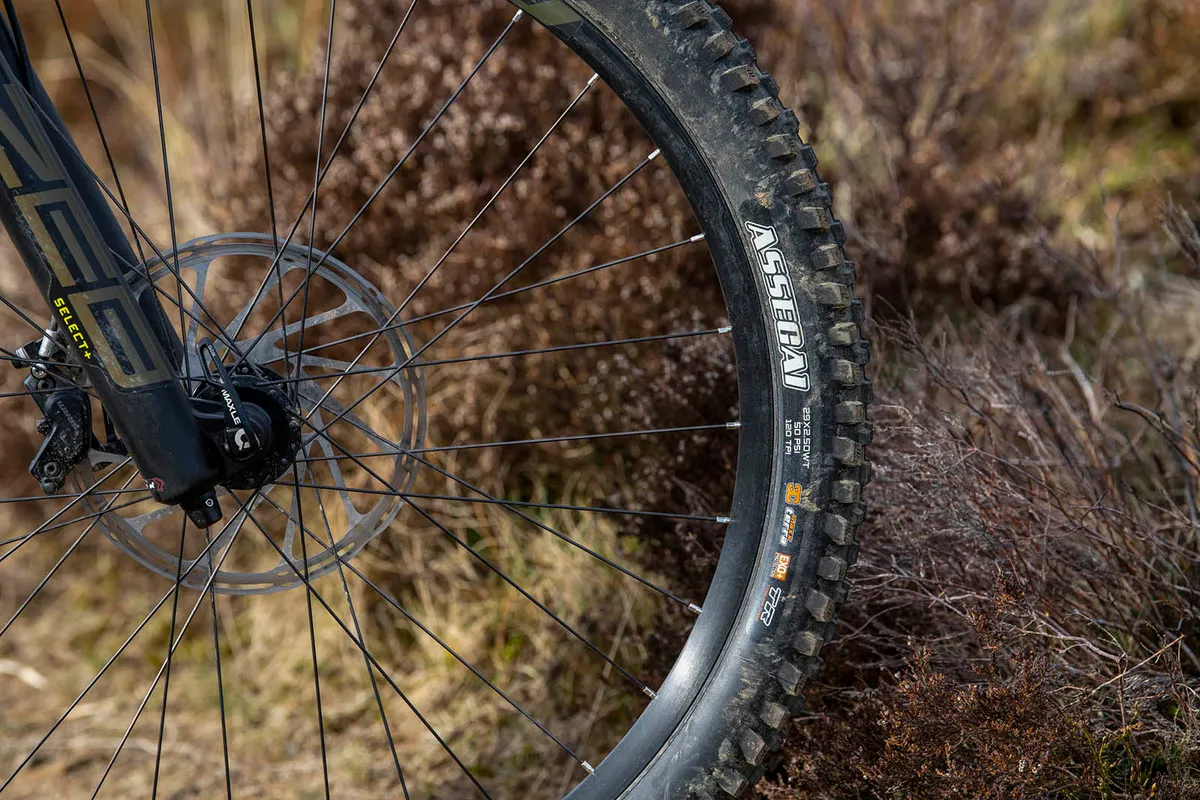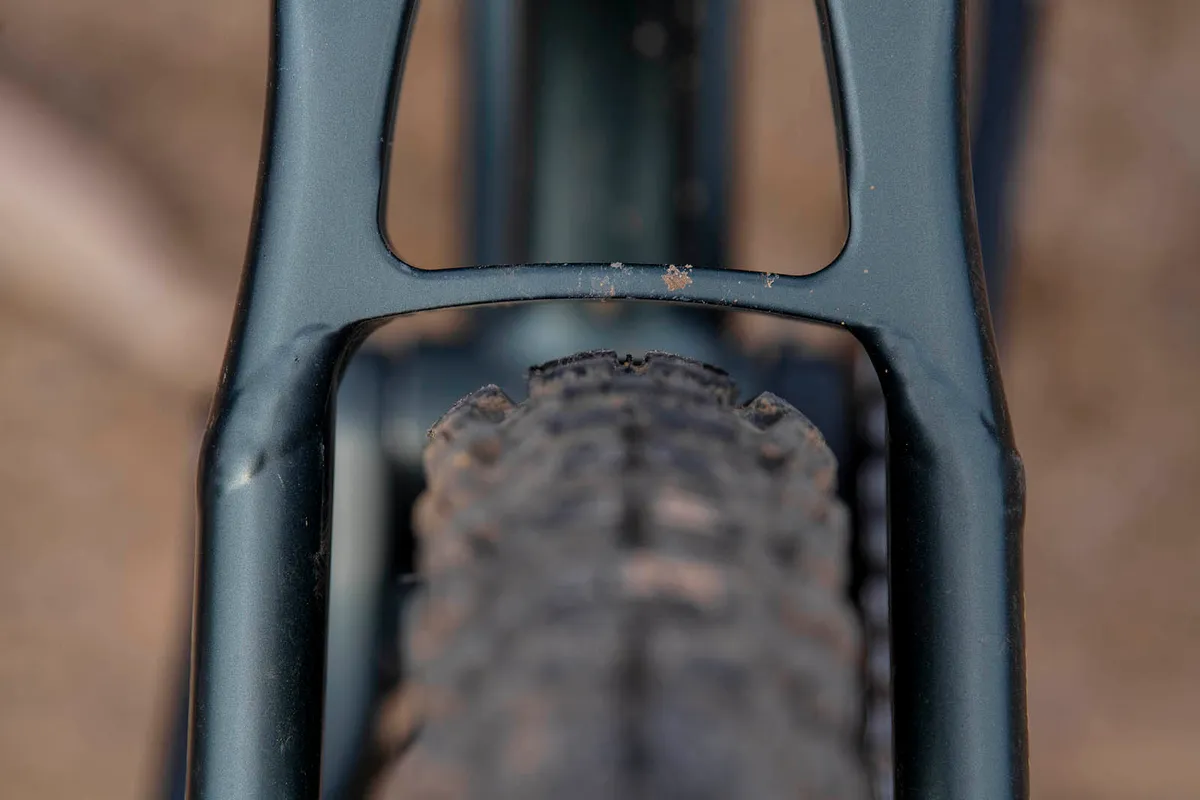I was blown away by the carbon-framed Whyte G-170 when I tested it for enduro bike of the year in 2020. For 2021, the G-180 replaces that bike, though it’s more of a running update rather than a whole new machine. But how does it compare on the trails to its predecessor and the best of the competition?
Whyte G-180 RS 29 V1 frame and suspension
Although the G-180 is technically a new bike, it’s basically a reworking of the G-170. It still has the same four-bar, Horst-Link suspension layout as its predecessor, but travel has been bumped up to 167mm and has been designed to pair with a longer travel, 180mm fork up front.
That rear-wheel travel has been tweaked too, and now uses a higher starting leverage ratio and a more rearward axle path to help improve that initial suspension response. Whyte didn’t leave it there though, upping the anti-squat figure in a bid to make it more responsive to rider inputs too.
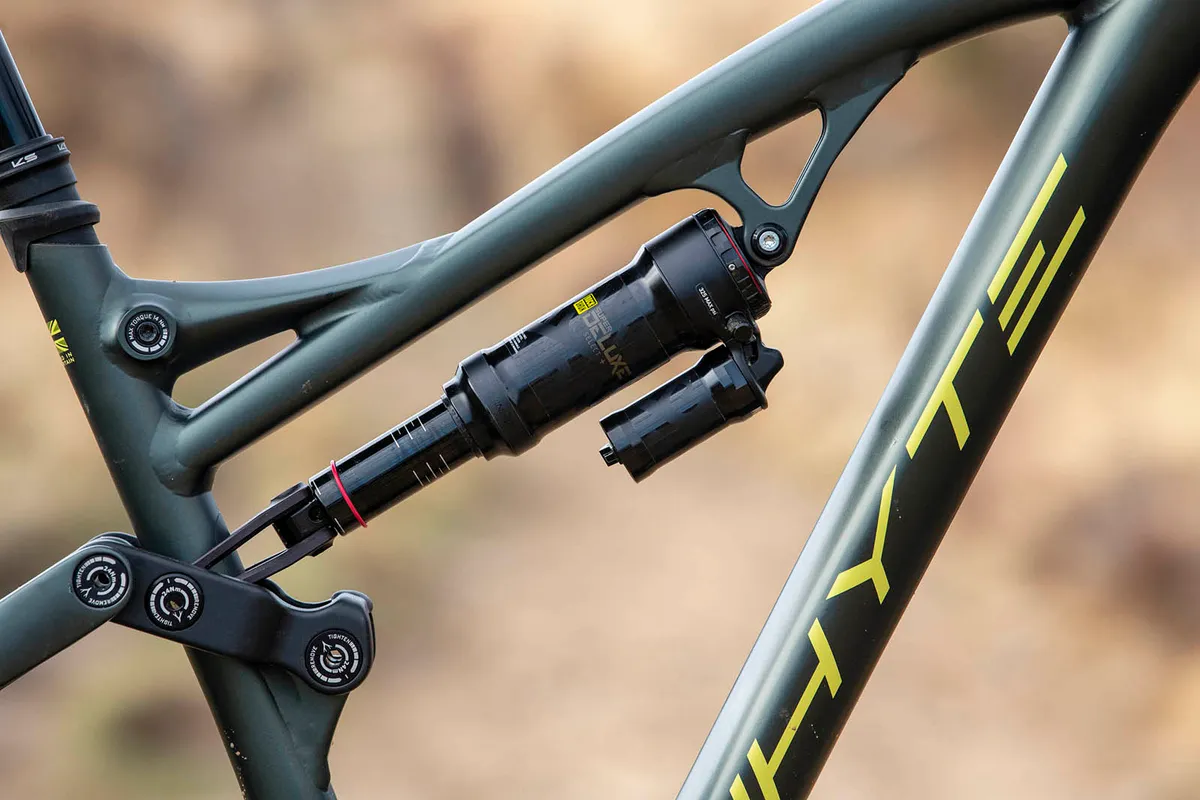
Controlling all that travel is the ever-impressive RockShox Super Deluxe Select+, which offers riders easy tuning by adding volume spacers to the air spring to alter the progression of the final part of its stroke. This is along with rebound damping adjustment and a low-speed compression, which’ll firm the shock up for nice and efficient pedalling.
Unlike its predecessor, the G-180 doesn’t come with a carbon front triangle. No, this is an entirely aluminium frame. Looks continue to be divisive thanks in part to its curvy lines and kinked seat tube, though it’s definitely grown on me over time.
The back end is still designed around the ‘Single Chain Ring’ concept, which made the use of early 1x systems, doing away with the need for a front mech, and allowing designers to broaden the main pivot, boosting strength and stiffness.
The cables are routed internally to keep things neat and tidy, with sturdy rubber grommets at the entry and exit ports to keep them in place and rattle free. There’s also plenty of rubberised integrated chainstay protection so things are quiet at the back too.
Whyte G-180 RS 29 V1 geometry
The G-180’s reach of 455mm feels pretty much close to bang-on for a modern-day size-Medium enduro bike. Whyte increased this measurement by 5mm compared to the G-170 from last year, but in doing so, made the wise decision to extend the rear centre (otherwise known as the ‘effective chainstay’, measured from the centre of the bottom-bracket axle to the centre of the rear wheel axle) in order to better balance the rider between the wheels.
Extended, the front end of the bike is all good when it comes to stability, but it can make weighting the front tyre trickier through the turns. Extending both should help to counter that issue.
A slack 64-degree head angle coupled with that decent reach measurement gives the G-180 a front centre of 800mm – a number close to that of many downhill bikes just a few years ago.
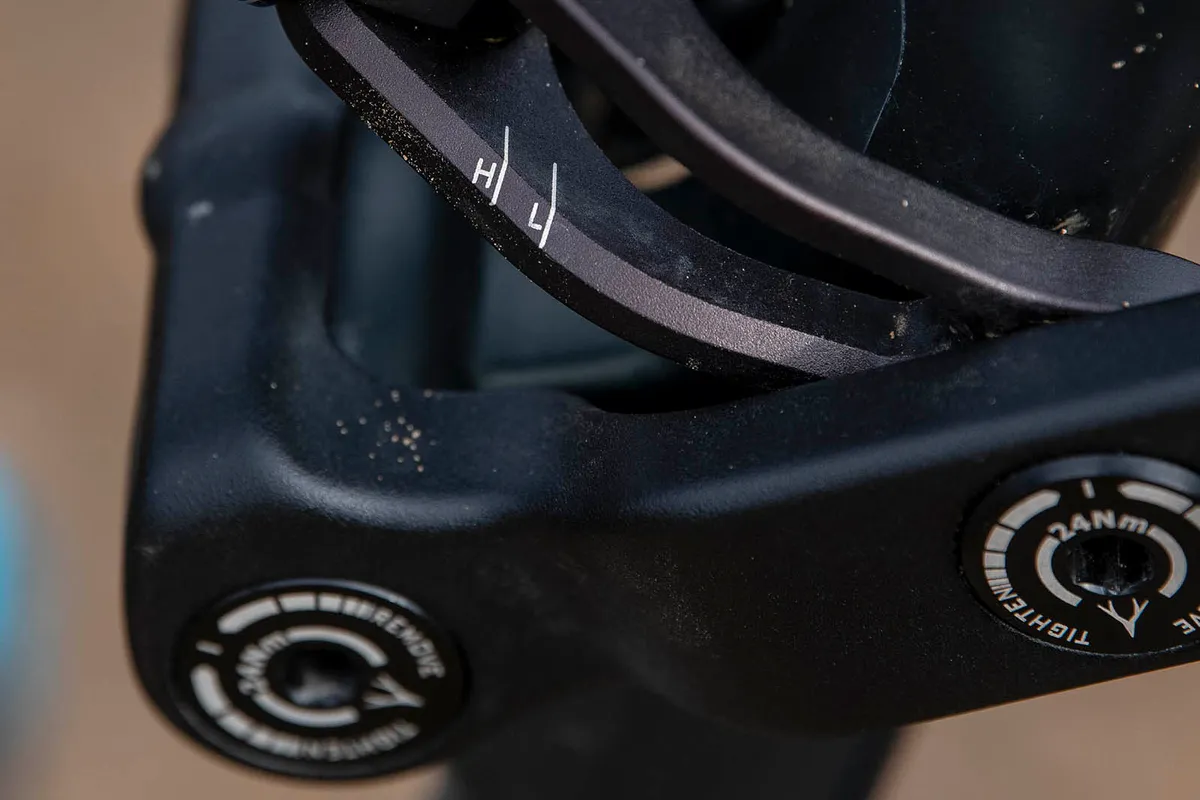
To help improve the rider position on the bike while seated, Whyte has increased the effective seat angle by one degree and this measures in at 75.6-degrees with the saddle at 750mm from the bottom bracket. As I ran my saddle lower (closer to 700mm), the effective seat angle on my test bike was closer to 76-degrees, which felt comfortable on the climbs.
When it comes to geometry adjustment, the ‘shape.it’ link (which fixes to the base of the shock), allows you to alter the head 0.6 degrees and the bottom-bracket height by 8mm – great if you’re struggling with pedal strikes, though I had no problems with ground clearance throughout testing.
Whyte also offers the ‘shape.it up’ link to convert to the G-180 to a mixed-wheel-sized bike. At 343mm, the bottom bracket is pretty low considering the amount of travel on tap.
One thing some testers noted was the tall top tube. With a claimed standover height of 839mm on the Medium, it does stand high compared to others. At 172cm (5ft 8in) tall, I didn’t have a lot of clearance when straddling the top tube, but didn't find it to be an issue on the trail.
This new aluminium frame comes in Medium to Extra Large, so if you’re after a smaller frame, you’ll need to buy the 650b version.
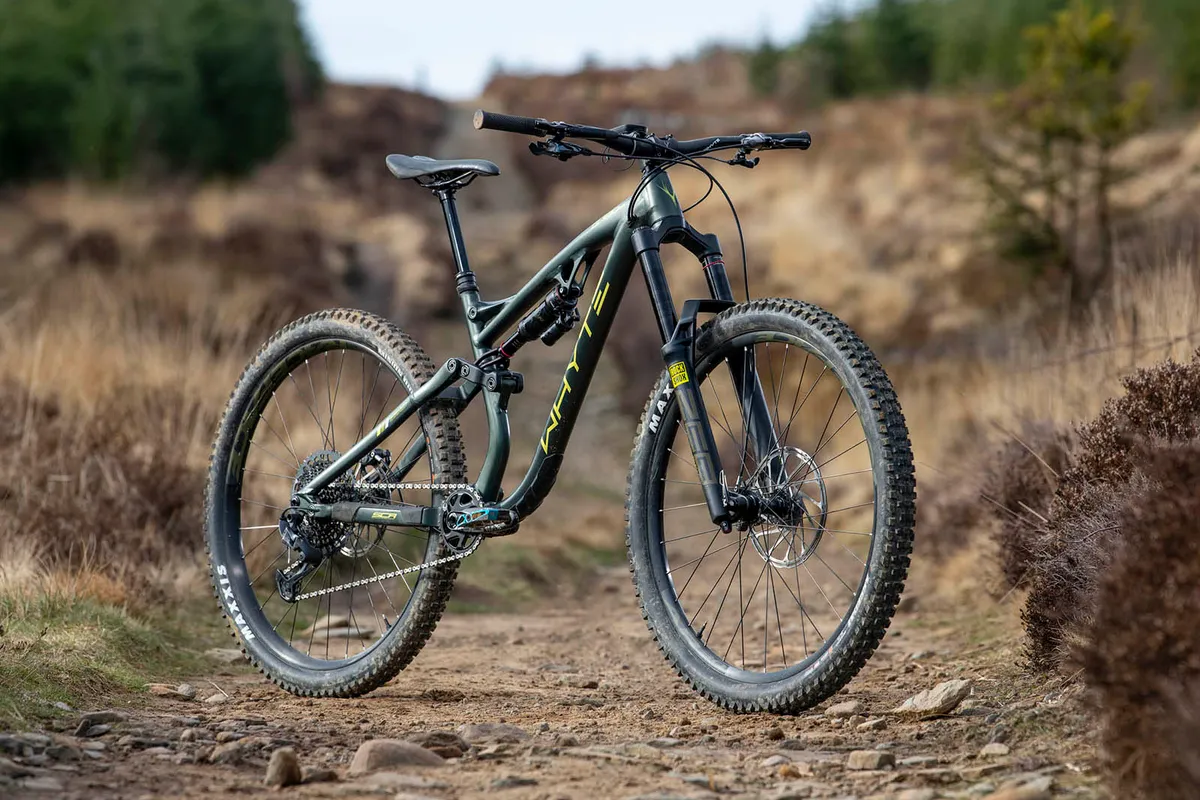
| | M | L | XL |
|---|---|---|---|
| Seat angle (degrees) | 75.6 | 75.3 | 75.1 |
| Head angle (degrees) | 64 | 64 | 64 |
| Chainstay (cm) | 44 | 44 | 44 |
| Seat tube (cm) | 43.18 | 45.72 | 48.26 |
| Top tube (cm) | 60.5 | 63.9 | 67.1 |
| Head tube (cm) | 10 | 11.5 | 13 |
| Bottom bracket height (cm) | 34.5 | 34.5 | 34.5 |
| Wheelbase (mm) | 1,241 | 1,275 | 1,309 |
| Standover (cm) | 83.9 | 84.4 | 86.1 |
| Stack (cm) | 63.8 | 65.2 | 66.5 |
| Reach (cm) | 45.5 | 48.3 | 51 |
Whyte G-180 RS 29 V1 specifications
Matched with the RockShox Super Deluxe Select+ shock, the ZEB Select+ fork helps create a properly capable pairing. It’s incredible to see a bike at this price touting a fork of this calibre.
The burly 38mm upper tubes and smooth, well-controlled Charger 2.1 RC damper make it a formidable unit. With 180mm of travel on tap, there’s no volume spacers inside the air spring, and I didn’t add any during testing, though I did play with the low-speed compression damping, increasing it to add some stability and support.
SRAM takes care of the drivetrain, which in this case is the recently revised GX Eagle 12-speed transmission. This includes the massive 10-52t cassette to provide the 520 per cent gear range. The US brand also provides its Code R, four-piston brakes, which has always done well in testing with BikeRadar.
Whyte has been smart when it comes to the details too, opting to spec a huge 220mm front disc rotor – which is normally reserved for eMTBs – and a 200mm, rather than 180mm rotor, at the rear to ensure masses of stopping power, even in the wet.
Tyre choice is another of the G-180’s strong points thanks to the Maxxis combo. Up front, a chunky, 2.5in Assegai 3C MaxxTerra tyre with an EXO+ casing adds cushioning and corner traction.
At the rear, the consistent and predictable 2.4in DHR II tyre and its tough Double Down casing has proven itself time and time again as a solid all-rounder, and offers great corner and braking traction when things get steep.
Whyte takes care of the bars, stem and the saddle, as well as the grips, which have had a proper makeover for 2021 (I used to moan about the old grips. Apologies Whyte… but thanks for changing them). The new, thinner grips are more like DMR’s Deathgrip in appearance and feel, but with an added low-flange around the outer edge.
Whyte G-180 RS 29 V1 ride impressions
Whyte's bikes have always been some of the easiest to get dialled in and the G-180 is no exception.
After setting the sag at the rear to 30 per cent and getting the fork to feel as desired, aside from adding a little extra low-speed compression damping to the ZEB, I didn’t need to touch anything else throughout testing.
It’s worth noting that RockShox provides a decent guide to spring pressures on the side of the ZEB, but you’ll need to be as accurate with your shock pump as possible, as small changes to the spring pressure are noticeable on the trail.
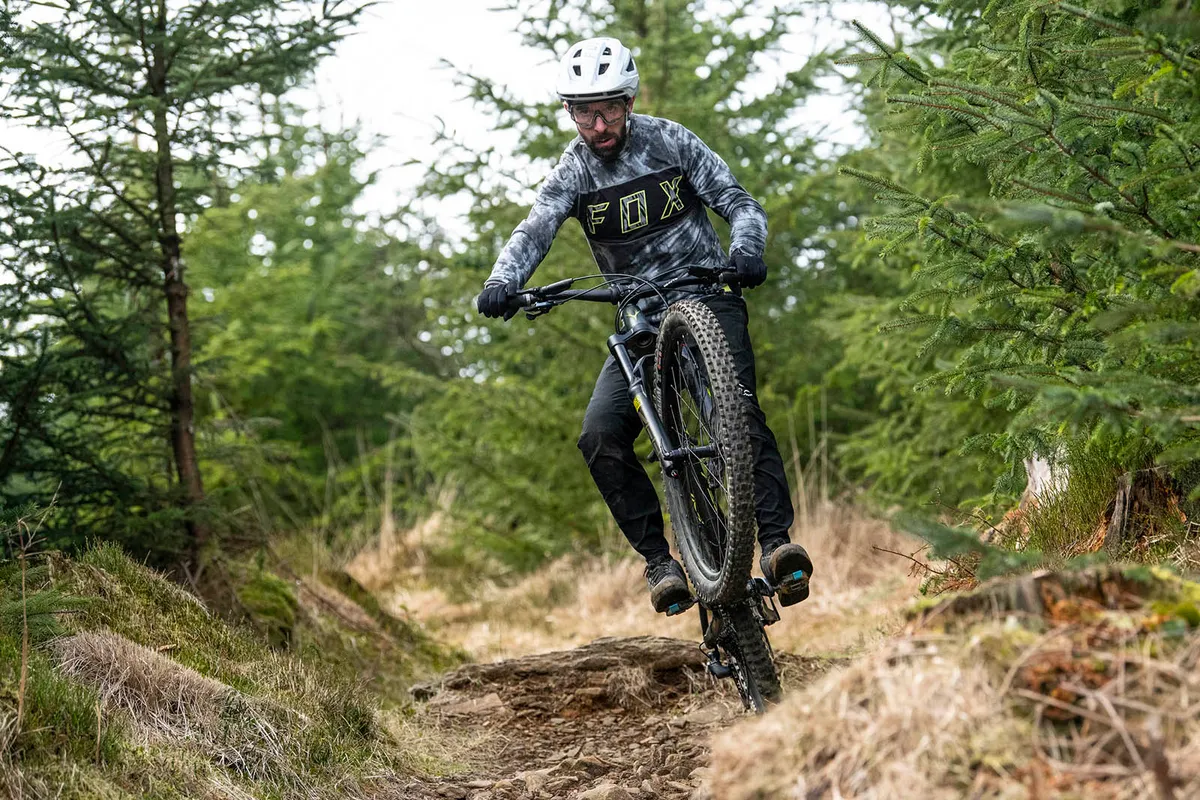
When it came to riding, I chose to spend a chunk of time riding steep, natural trails that offer different types of dirt, plenty of roots, some rocks – a real test for any bike.
Once I was comfortable riding these types of tracks, I moved on to riding the trails at Bikepark Wales. Here, the speeds are higher and the tracks are rougher and longer too. These help to highlight key attributes of any bike, including how well they can maintain momentum, how they behave when being exposed to multiple, successive hits, and how stable (or not) they feel at higher speeds.
Whyte G-180 RS 29 V1 climbing performance
The G-180 is surprisingly keen when pointed uphill, thanks to the comfortable seated position that places you nicely above the bottom bracket and provides a nice, reasonably roomy feel.
With the shock left open, the rear suspension remains relatively calm while sitting and spinning a gear uphill, ensuring the rear tyre can keep digging in, finding traction when the surface loosens up.
It was only when faced with steeper pitches where my cadence dropped and pedalling became less smooth that I found myself reaching for the shock’s lever, looking to firm things up to keep the bike sitting higher in its travel.
If I didn’t do this, I had to counter by shuffling forwards on the saddle, which became uncomfortable when tackling lengthy sections with a steep gradient.
At 16.1kg, the G-180 is no featherweight, but it still manages to feel more eager than some of its lighter, similarly intended counterparts.
Whyte G-180 RS 29 V1 descending performance
The G-180 will hit you with all the confidence and traction you need. Lean it into a rough, loose turn and feel the suspension and tyre treads working away beneath you, searching out every bit of traction on offer.
That low-slung bottom bracket helps accentuate the easy-going, corner-ripping nature further and I was impressed with how fast I could hurl this bike from turn to turn. The well-balanced ride position helps too, and I never felt like I needed to throw my weight around to counter any unusual pitching as I loaded the bike through the corners.
It doesn’t feel quite as gung-ho as Nukeproof’s new Giga – which has much of its weight concentrated low, down near the bottom bracket and feels closer to an eMTB when slicing across an inside-line – but it’s not far off.
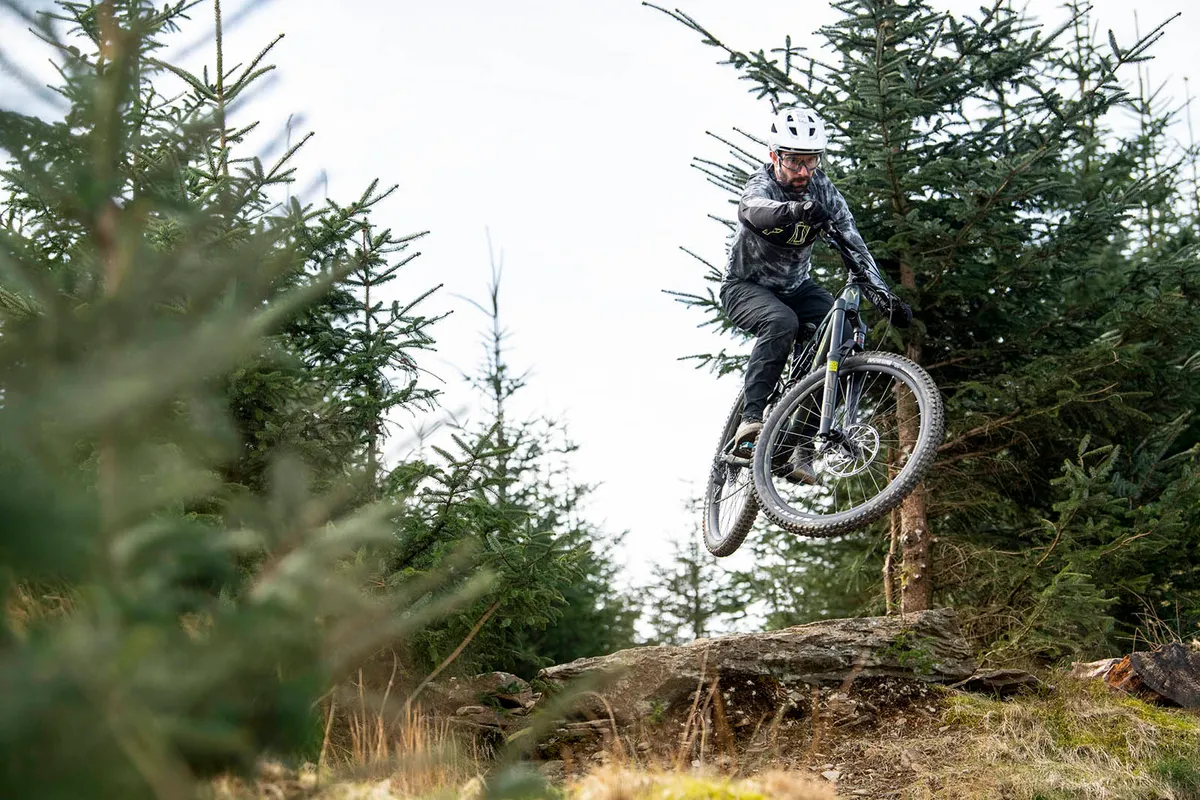
On faster, mellower sections of trail, despite all the travel on tap, the G-180 still manages to offer a healthy amount of pop, making gaps easier to clear, adding pep to more pedestrian sections of track. I rode the Whyte back-to-back with the Nukeproof Mega and it helped highlight this particular trait.
Although the Mega has a little less travel on tap, I worked it harder to clear the same gaps or jumps, while the Whyte just seemed to make it all a little bit easier. However, the Whyte still feels like a big bruiser of a bike, but one that’s more manageable and requires less muscle to handle than others.
And while it’ll carry momentum well, it doesn’t come as easy as on the likes of the Trek Slash, for example, where it just seems to happen with less effort but is no less capable when the trails get really rough and rowdy.
When you venture into steeper sections of trail, the tyre combo and punchy brakes with those massive rotors give the impression you can ride as recklessly as you fancy and get away with it.
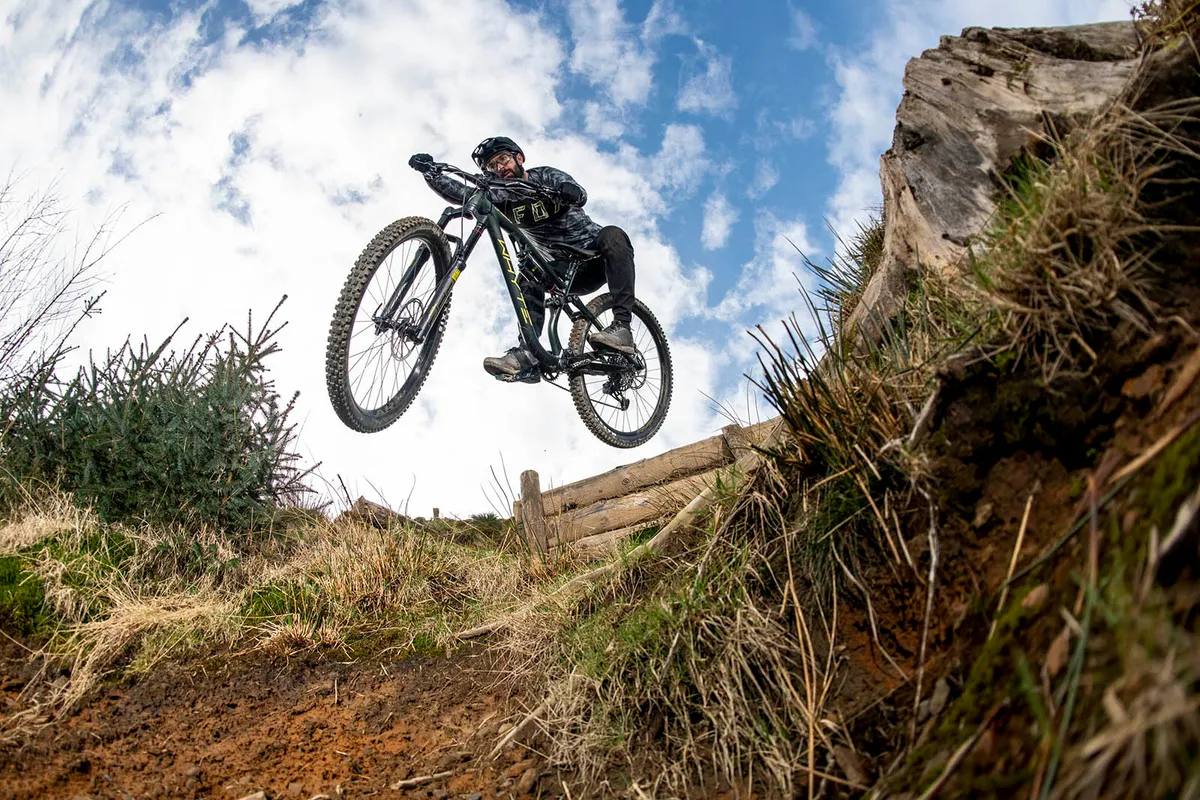
Batter into a high-speed rock garden and the Whyte does a great job of isolating the rider from the carnage beneath the tyres. It feels well-centred in terms of ride position, but also stable and balanced when it comes to the feel through the suspension.
The ZEB fork up front feels stout and accurate, and the supple stroke helps maintain comfort on prolonged chattery trails. While it might not feel quite as composed as the likes of a Fox 38 GRIP2 fork, its active nature helps ensure you don’t feel beaten up at the end of a long run.
There’s no getting away from how capable the new Whyte G-180 feels on a multitude of terrain, and the changes that have been made compared to the previous bike might only be small but add up to some big improvements on the hill.
Whyte G-180 RS 29 V1 bottom line
When it comes to value and performance, the new Whyte G-180 is a really tough bike to beat. Its prowess through the turns and the confidence it delivers when the trail gets steep or treacherous really is incredible.
It might not feel as rapid as the likes of the Trek Slash in certain situations, but it isn’t far off. Aside from the spec, the balanced suspension and well-centred ride position help it stand out. If you’re looking for a big hitter that's happy to be pedalled to the top of the hill, then you should consider the G-180.
Product
| Brand | whyte |
| Price | 3500.00 GBP |
| Weight | 16.1000, KILOGRAM (M) - |
Features
| Fork | RockShox ZEB Select+, with 180mm (7.1in) travel |
| br_stem | Whyte Enduro stem, 35mm |
| br_chain | SRAM GX |
| br_frame | 6061 alloy, with 167mm (6.6in) travel |
| Tyres | Maxxis Assegai 3C MaxxTerra EXO+ 29x2.5in WT (fr) and Maxxis Minion DHR II 3C MaxxTerra DD 29x2.4in WT (r) |
| br_brakes | SRAM Code R (220mm/200mm rotors) |
| br_cranks | SRAM Descendant 7K |
| br_saddle | Whyte Custom |
| br_wheels | Race Face AR-30 rims on Alloy hubs |
| br_headset | FSA No.57 Orbit ZS Plus |
| br_shifter | SRAM GX Eagle |
| br_cassette | SRAM XG-1275 10-52t |
| br_seatpost | KS Ragei, 150mm |
| br_gripsTape | Whyte Lock-On V |
| br_handlebar | Whyte Custom, 780mm |
| br_rearShock | RockShox Super Deluxe Select+ |
| br_bottomBracket | SRAM DUB |
| br_availableSizes | M, L, XL |
| br_rearDerailleur | SRAM GX Eagle |
